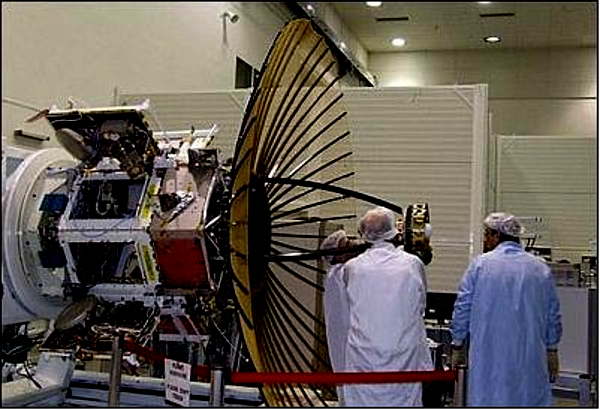The Indian Space Research Organisation (Isro’s) workhorse PSLV-C46, carrying RISAT-2B, a radar-imaging earth observation satellite, took off successfully from the Sriharikota space port. The satellite will beef up India’s surveillance capabilities in the sky.
After a successful countdown that started at 04:30 a.m. (IST) on Tuesday, the rocket was launched at 05:30 a.m. on Wednesday early morning as scheduled from the the Satish Dhawan Space Centre, Sriharikota, near Chennai.
About 15 minutes into flight, the rocket placed RISAT-2B into an orbit of about 555 km.
Stating that he was extremely happy to announce that PSLV-C46 has successfully injected RISAT-2B in precise orbit, Isro chairman K Sivan said with this mission, the PSLV rocket had crossed the landmark of lofting of 50 tonnes since it started flying. Adding that the PSLV satellite has put into orbit 350 satellites, he said, “The rocket had a piggy back payload, the indigenously developed Vikram computer chip that will be used in the future rockets.”
PSLV-C46 is the 48th mission of PSLV and the 14th flight in ‘core-alone’ configuration (without the use of solid strap-on motors). This is the 72nd launch vehicle mission from SDSC SHAR, Sriharikota and 36th launch from the First Launch pad.
PSLV, in its 48th mission, carried the 615-kg RISAT-2B into an orbit of 555 km at an inclination of 37 degrees, Isro officials said. The application would help agriculture and forestry and also support disaster management initiatives.
PSLV-C46 takes off successfully with India’s earth observation satellite
The launch also marks the resumption of a vital ring of Indian all-seeing radar imaging satellites after seven years. Isro officials said that in the coming months, over six satellites will be launched to form a constellation of space-based radars offering a comprehensive vigil over the country. These satellites can serve as the eyes of the nation from about 500 km in space.
These satellites work like a light-dependent camera that cannot perceive hidden or surreptitious objects in cloudy or dark conditions. They are equipped with an active sensor, the synthetic aperture radar (SAR), so they can sense or ‘observe’ Earth in a special way from space day and night, rain or cloud.
Ratan Shrivastava, advisor (space division), Federation of Indian Chambers of Commerce and Industry (Ficci), said that continuing the series of defence satellites, starting from HySis, to EMISAT, the RISAT 2B, a radar imaging satellite, in X Band which allows 24-hour uninterrupted views without interference from clouds, rain and other inclement weather conditions, will be extremely helpful in tracking any hostile activity on Indian soil. They are useful in monitoring movements such as infiltration or gathering of militants, which will help the armed forces counter such enemy activity in real time. RISAT 2, which is already functional, was helpful during recent operations across the border and RISAT 2 B will augment the surveillance capability.
Radar imaging satellites are also used for crop estimation, because the main kharif crop growing season is in May-September, when it rains and gets cloudy. These satellites deliver data extensively for forestry, soil, land use and geology and are extremely useful during floods and cyclone as well.
According to Sivan, the (next) major mission will be the Chandrayaan-2 or the second moon mission, which is expected to happen in July. Following that will be the launch of a high resolution satellite and Isro’s new rocket, the Small Satellite Launch Vehicle. (SSLV).
Pointers
- 72nd launch vehicle mission from SDSC SHAR
- 48th flight of PSLV
- 36th launch from first launch pad
- 14th flight of PSLV Core-Alone
- 3rd launch in 2019
Source:BS
Image Courtesy:EOPORTAL
You may also like
-
New Heat-Based Approach To Cancer Treatment Can Reduce Chemotherapy Doses
-
Scientists Take A Major Step Towards Unification Of Classical & Quantum Gravity
-
India Graphene Engineering and Innovation Centre (IGEIC) Under the Vision of Viksit Bharat@2047 Launched
-
New High-Performance Gas Sensor can Monitor Low Level Nitrogen Oxides Pollution
-
Antidepressant Drug can be Repurposed for Treating Breast Cancer
